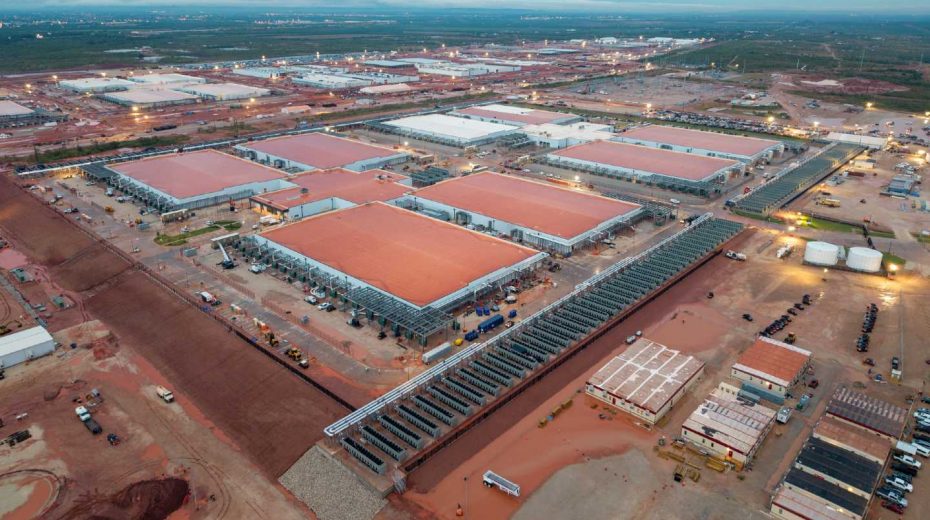
It’s a steep price to pay so that Mark Zuckerberg can sell AI-enabled spy glasses.
In drought-stricken Los Angeles, residents face fines up to $600 for watering their lawns on prohibited days or hosing down driveways.
Yet, even as locals must restrict water use, California’s data centers are exempt from revealing how much water they consume. Earlier this month, Governor Gavin Newsom vetoed legislation that would have required these facilities—known to use millions of gallons daily—to report their consumption figures.
As the artificial intelligence surge continues—or perhaps bursts—tech companies are heavily investing in AI infrastructure, with spending expected to reach billions next year. In explaining his veto, Newsom cited the “unprecedented demand” for data centers and expressed hesitation to enforce strict reporting rules on such a vital sector. Put simply: why hamper the lucrative cash cow?
Data centers serve as hubs for computers, servers, and equipment that manage and store digital data. “Hyperscale” centers, favored for AI model training due to their vast processing power, can span over 1 million square feet—comparable to about 17 football fields. These sites rely on water for humidity control and to cool heat-producing machines. As American data centers have expanded in number and size, water use has soared from 5.6 billion gallons in 2014 to 17.4 billion in 2023.
Local communities already endure the consequences. In Newton County, Georgia, one Meta-owned center contributes roughly 10% of total water usage. Residents near this facility have reported to The New York Times that their wells produce discolored or no water, suggesting damage from construction. The area faces shortages, soaring costs, and potential water rationing—an enormous cost to pay so Mark Zuckerberg can market AI-powered spy glasses.
It’s no surprise that companies frequently keep water usage under wraps. The Data Center Coalition, representing industry interests, opposed California’s disclosure bill, later vetoed by Newsom. In 2021, a city in Oregon sued a newspaper trying to expose Google’s water consumption; Google covered the city’s legal expenses. Once the matter settled, reports revealed Google’s centers used over a quarter of the local water supply.
Cooling methods that use less water often require more electricity—and AI data centers already demand vast power. A typical facility consumes energy equivalent to that of 100,000 households, placing heavy strain on the grid. Utilities pass these costs to residents, with electricity rates near data centers rising up to 267% in five years. Additionally, data centers generate constant noise and may remain brightly lit at night—hardly ideal neighbors.
To meet increasing energy needs, utilities are adjusting. Pennsylvania’s Three Mile Island, site of the worst U.S. nuclear accident, is restarting a reactor to power Microsoft’s data centers. In Mississippi and Georgia, coal plants once planned for shutdown will continue operating, emitting large amounts of carbon dioxide.
Data center proponents highlight economic benefits, particularly for small towns. But many areas attract investment through tax incentives that reduce public revenue. In Virginia’s “Data Center Alley,” only 48 cents is gained for each dollar of sales tax waived for these server farms. While construction creates thousands of temporary jobs, ongoing operations employ relatively few workers. For instance, a Microsoft center in Illinois added 20 permanent positions but secured $38 million in tax breaks.
Across the U.S., communities are growing aware of the pitfalls tied to many data center agreements. Citizens are organizing petitions, protests, and calling for regulation. New Jersey is considering a bill mandating renewable energy use and water efficiency for centers. Oregon recently passed a law raising electricity costs for data centers and other industrial consumers.
Activists’ efforts are bearing fruit. Last week, Microsoft canceled plans for a 244-acre complex in Wisconsin following local opposition. In September, Google withdrew a data center proposal shortly before the Indianapolis city council voted, with protesters displaying signs reading “No Big Tech” and “Stop Oligarch Bailouts.”
No one asked for AI to threaten employment or to place “plagiarism machines” into students’ hands. Yet AI has integrated rapidly into society, with little public control over its spread. Regarding data centers, however, communities are showing they can resist and succeed.
Original article: thenation.com





